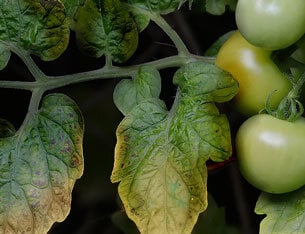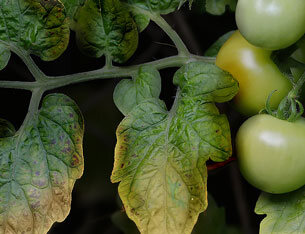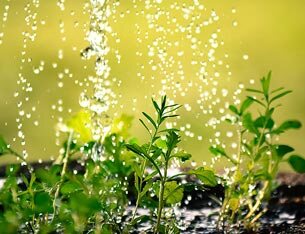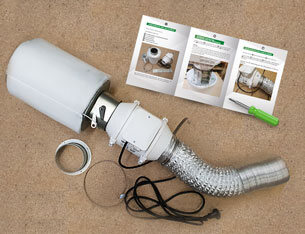Similar to watering, you should also say goodbye to the idea of "a lot helps a lot" when fertilising as soon as possible. Over-fertilised plants simply cannot process the mass of nutrients. They grow worse, don't taste good and, in the worst case, can "burn".
Recognise overfertilisation
When your plants suffer from so-called nutrient burn, the leaves get yellow or brown tips and edges. The leaf tips curl up, the discolouration moves to the inside of the leaf. Finally, the tips die. The supply of nutrients to your plants also interacts with each other. An over-supply (through over-fertilisation) of one nutrient can therefore very well lead to a deficiency of other nutrients. In this case you should never try to correct the deficiency by adding more fertiliser.
Overfertilise seedlings immediately
The danger of overfertilising is particularly great with seedlings. The seeds contain all the important nutrients for this sensitive phase, which is why you should always use unfertilised growing soil. Only when the seedling has developed enough roots of its own (1-2 weeks) should you repot it into a larger pot with potting soil. Potting soil is usually pre-fertilised, so you should not add any additional fertiliser at first.
Check and correct pH and EC
Both values must be in the optimal range to ensure an optimal nutrient supply for your grow. If the pH value of the soil is not adjusted correctly, nutrients cannot be processed properly in the leaves and nutrient burn will occur. The optimal pH for growing on soil is between 6.0 and 7.0, and if the EC is too high, your grow medium may be saline, which can lead to nutrient lockout. Again, what looks like a lack of nutrients is actually a lockout in the soil. The minerals needed cannot be absorbed by the plant because of the oversaturation of the soil with salts.
Our Growmart tip in the blog: Measure and correct pH You can order the appropriate pH meters and EC meters from us!
Grow overfertilisation causes
Excessive, too well-intentioned or simply wrong application of grow fertiliser are the main causes of nutrient burn in plants. The manufacturers of grow fertilisers also contribute to this. Often 20% of the amount stated on the package is enough. You should also make sure that you really use the right, well-adjusted fertiliser. If overfertilisation occurs after repotting young plants, it is usually due to the pre-fertilised potting soil. In this case, it is usually sufficient to give the plant 1-2 weeks to completely process the nutrients contained in the soil.
Grow overfertilisation what to do
If your plants show the signs of overfertilisation described above, you should flush or flush the grow. Flush the soil or pot with clean water and wait 10 minutes before flushing a second time. The EC level of the drain should not exceed 50 ppm.
If you do not add any more nutrients or fertiliser, the plants should recover on their own.




